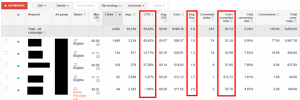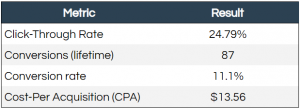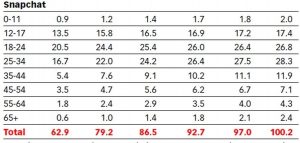Practical solutions to align creative and analytical marketing teams and create data fluidity for more responsive, effective campaigns.

Data-driven marketing organizations must create a conduit of information between their data teams and creative teams. However, legacy organizational structures, specialty skills and a lack of shared information often hinder this flow.
Let’s explore the roots of the divide between creative marketing teams and marketing analysts and uncover practical solutions to bridge this gap.
Understanding the gap
Marketers have historically built structures that physically and culturally separate teams. Specialties were grouped together, with “creatives” on one team and “analysts” on another.
- The creatives included campaign management, graphics and copywriting, with a focus on content creation, campaign ideation, branding and storytelling.
- Analysts were after-the-fact people, reporting on performance, pulling together market research and collecting data.
These groupings allowed organizations to concentrate skill sets, allocating individuals to their associated toolsets and easing communications within the function. The separation of the functions worked fairly well in a slower-moving world, with time for post-campaign results to inform the next campaign.
More data fluidity is needed
However, today’s “always-on” campaigns demand continuous results that must be analyzed, interpreted and fed back into the system, requiring a close relationship between functions. More interaction between these groups is needed. On average, employees waste 5.3 hours every week waiting for data from colleagues. These wait times lead to missed opportunities and missed revenue.
A holiday campaign gone awry: The cost of disconnects
Let’s take a look at how easy it is for data and creative teams to have the best intentions and still miss the mark in the following scenario.
A global retail company developed a major holiday marketing campaign, expertly imagined by the creative team. The integrated campaign featured a series of high-budget TV commercials, social media ads and in-store displays centered around a razor-sharp, on-trend holiday theme. Before launch, the creative team was already thinking, “Nailed it!”
Halfway through the season, the results became clear: lower-than-expected sales, a failure to resonate and lackluster engagement. The data teams pulled reports to feedback to the creative teams, but they could only pull the reports weekly due to API issues. Then, the creative teams took two weeks to develop new assets. By that time, the holiday season was halfway over.
The organization’s not-very-Happy New Year post-mortem revealed:
- Misaligned audience targeting: The creative team targeted Gen Z but failed to incorporate a sustainability aspect identified by the analysts that would have resulted in a more effective campaign.
- Lack of data-driven content: Social media and keyword analysis indicated the trend had peaked, but this message didn’t make it to the creative team.
- Disjointed metrics and KPIs: In its testing, the creative team focused on brand recall, while the analysts focused on conversion rates. The teams could not agree on optimization priorities, leading to inaction.
- Lack of feedback loops: Campaign managers requested bespoke reports from the data team and filtered through raw data to find insights. They then generated a creative brief and went through the traffic manager to get changes made.
The data teams had much of the information needed to fix the campaigns. However, the processes weren’t in place to get the data to the right people in time to adjust the campaigns promptly.
How to bridge the gap
Here’s how marketers can create more effective ways to bridge the gap between creative and data teams.
Cross-pollinate creative and data teams
Create more opportunities for creative and data teams to interact. For example, invite both creatives and analysts to initial kick-off meetings to provide a forum where data-driven insights can inform creative concepts and where creative ideas can be grounded in market realities. Ensure communication lines are open between the teams and that leadership supports those communication lines.
Visible campaign information radiators
Ensure campaign data is highly visible and available in real-time. Consider creating a shared dashboard accessible to creatives, campaign managers and data analysts, providing information on the creative’s performance. Develop a process where creative teams can share and prioritize actionable insights.
Reserve capacity
Consider reserving a set amount of time to refine campaigns-in-flight based on the actionable insights. A campaign is complete only after it has ended, not upon launch. In the beginning, estimate the capacity needed for in-flight campaigns and refine the reserve capacity over time.
Unified goals and KPIs
Make sure both teams are aiming for the same targets. As part of the intake process, the creative and data teams must agree on how to measure campaign success, including brand and business outcome metrics. Make sure that both teams are incentivized around the same metrics to avoid conflicts.
Integrated technology platforms and AI
Wherever possible, cross-pollinate technology. Invest in integrated marketing platforms that allow creatives to see performance results. Create templates for easy updating and use AI to optimize assets based on predefined targets.
Shared goals, shared success: Integrating creative and data-driven marketing
While traditional marketing organizations often group functional areas together, they do so at the risk of miscommunication and missed opportunities. Always-on campaigns demand marketers build circular pathways and processes to flow information between their data and creative teams.
Cross-collaboration, shared systems, and unified metrics support the data fluidity needed to meet and respond to the market. Organizations that focus their efforts in this direction will continue to see the gaps between creative and data teams shrink.
The post How to bridge the gap between creative marketers and marketing analysts appeared first on MarTech.
(12)
Report Post







